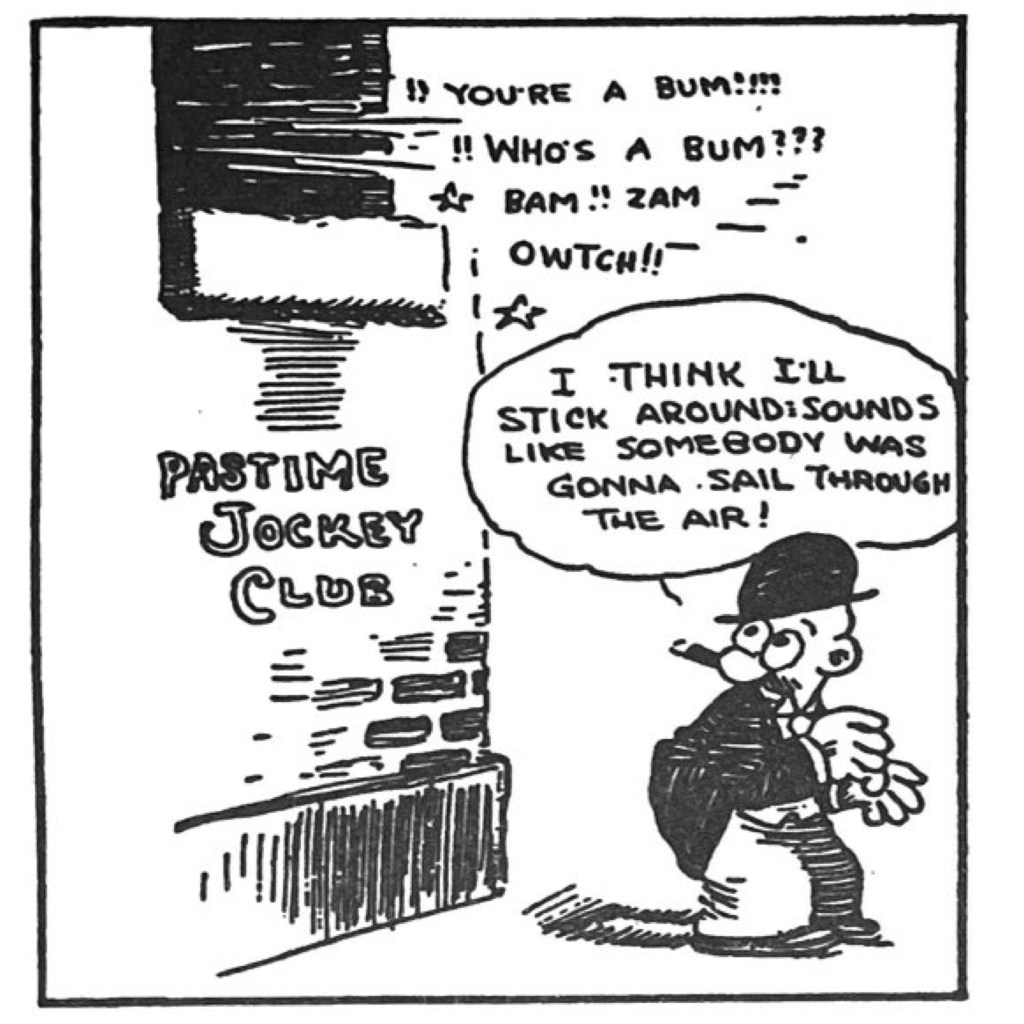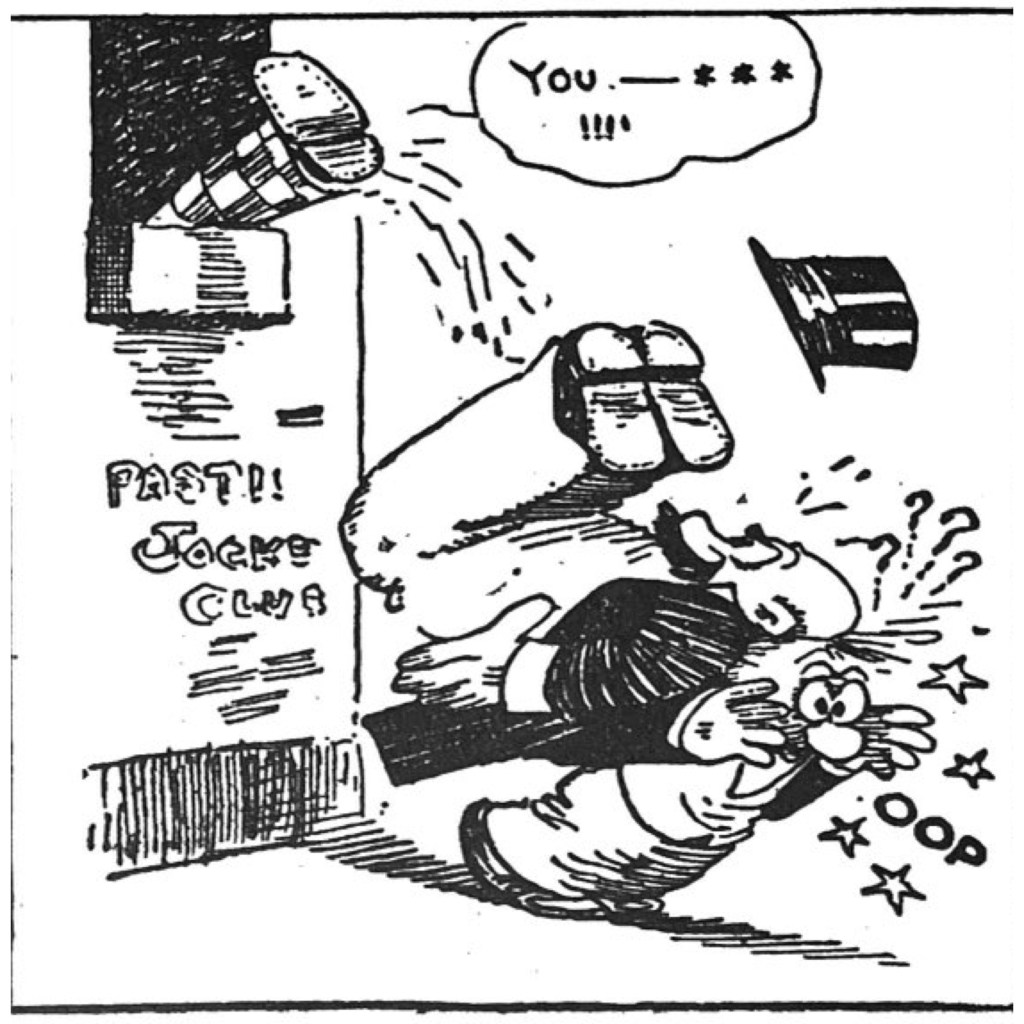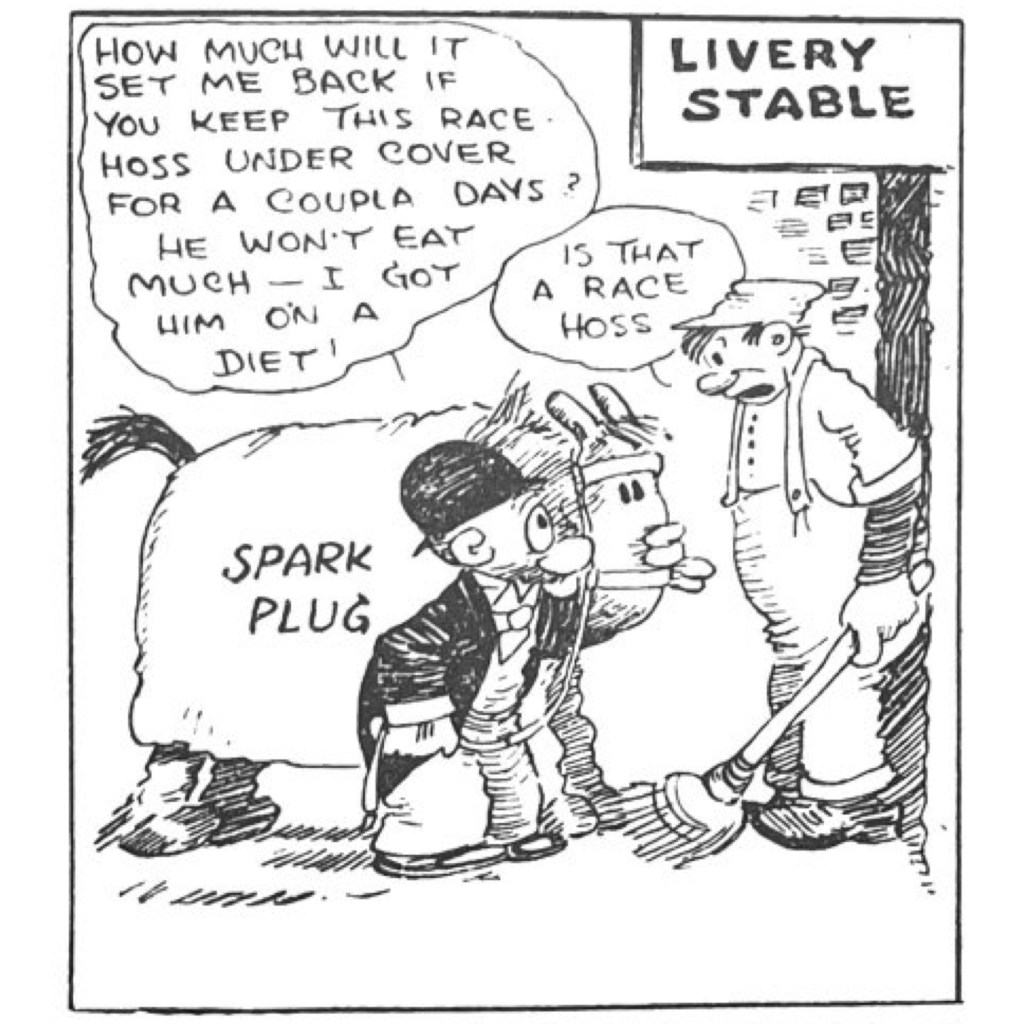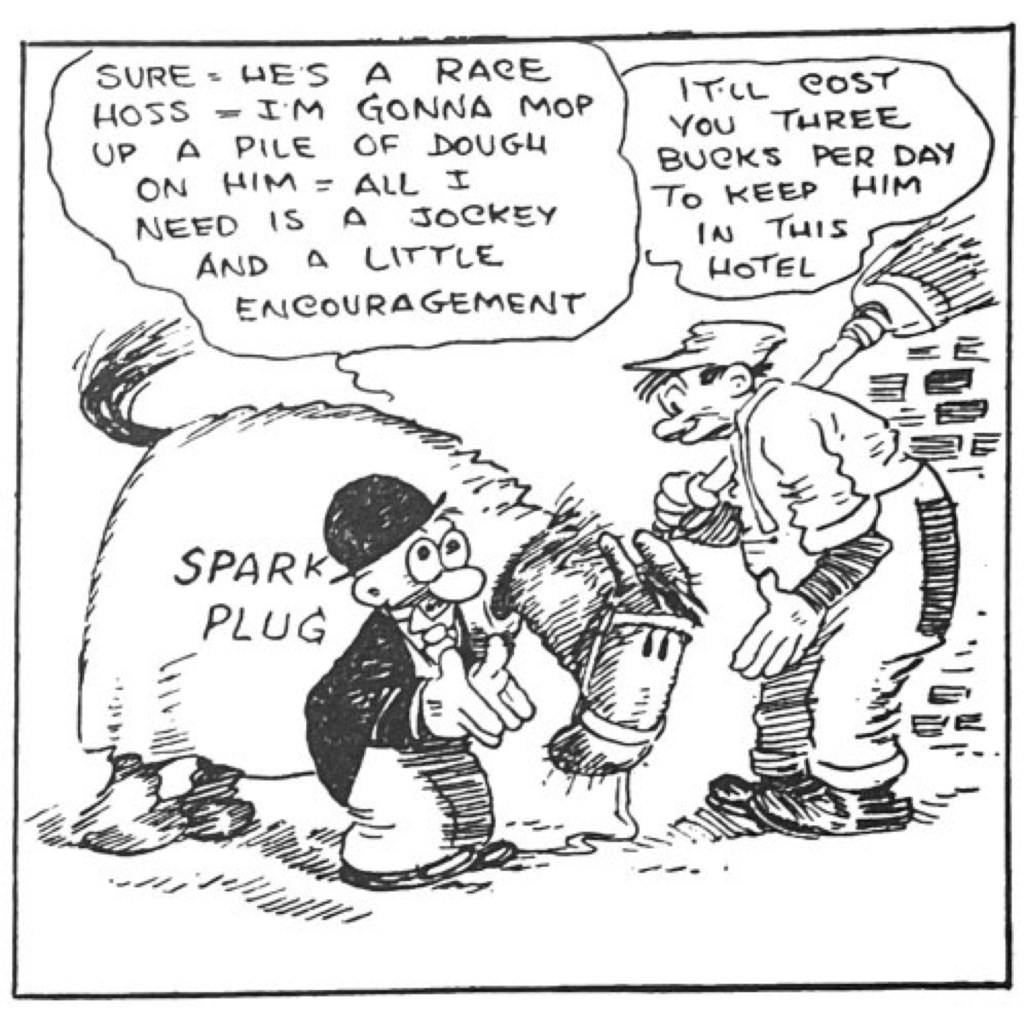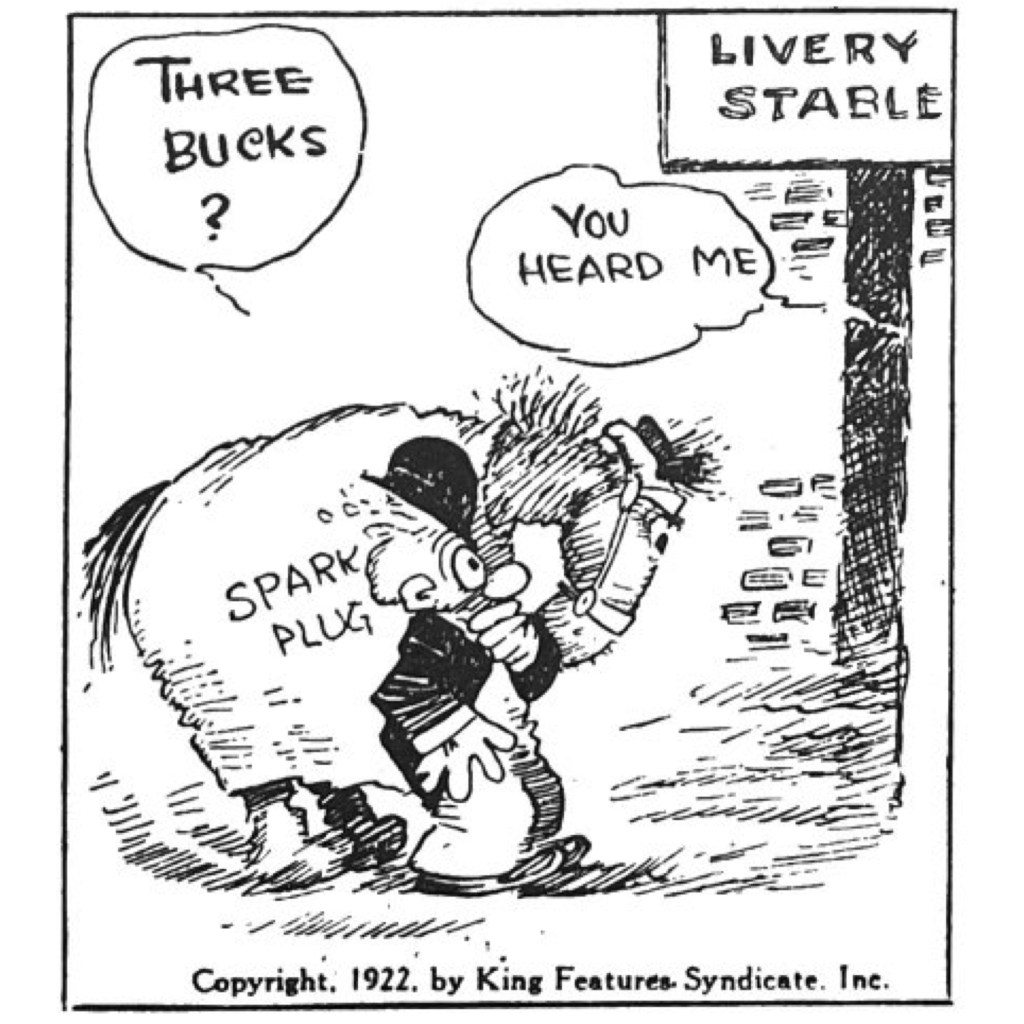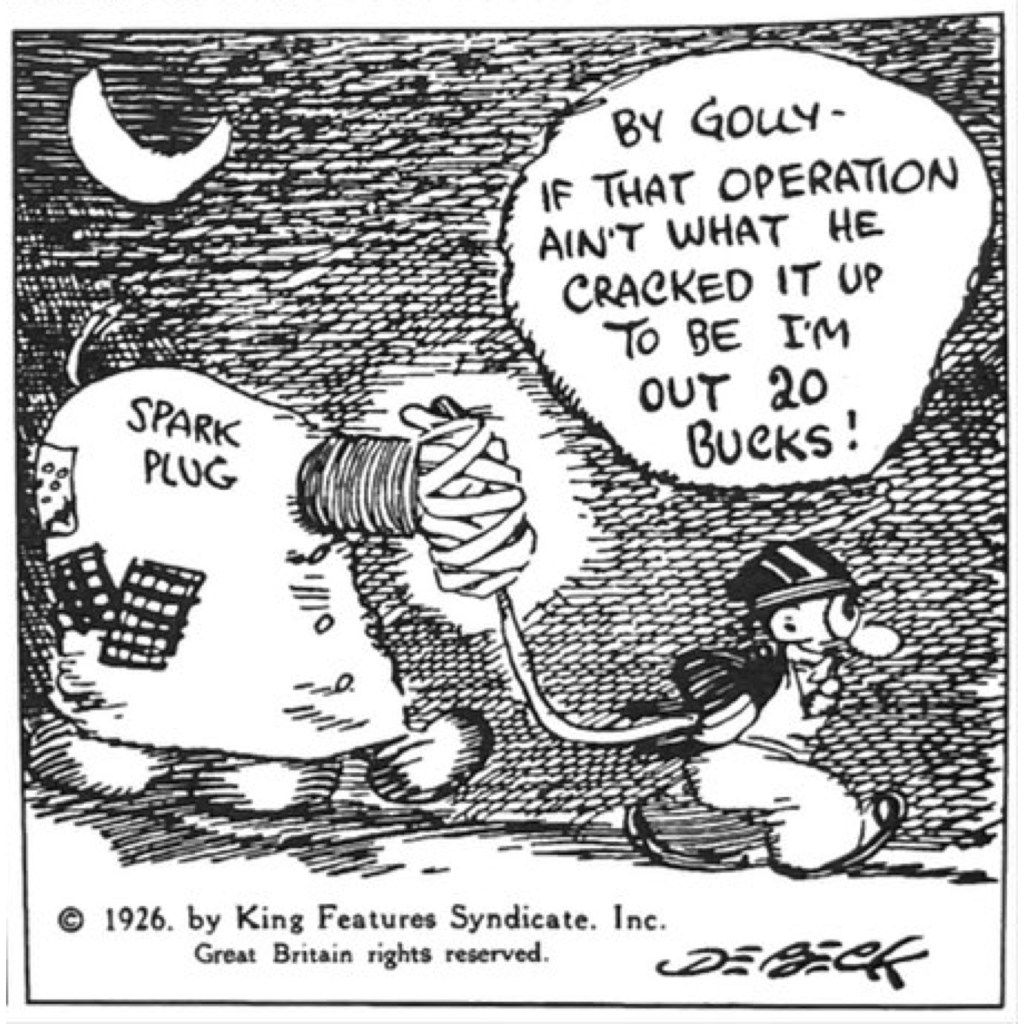Billy DeBeck described his own comic anti-hero as a “low-life” with a heart, but it took a few years from Barney Google’s introduction in 1919 for DeBeck to find his real character. Barney started as yet another henpecked husband, a servile schemer whose daily antics focused on outflanking his overbearing wife. From the start, however, DeBeck’s imagination veered towards outlandish solutions to everyday slights and oppression, At one point the early Barney plots to avoid his wife’s wrath by getting beat up to garner sympathy. Barney was DeBeck’s man on the margins, bouncing from job to job, always broke, forever buffeted by wife, bosses, circumstances or dumb bad luck.
As DeBeck came to understand his own character, Barney literally shrank in stature, from a tall but stooped supplicant to a figure half that original size, now more crushed than stooped, a compact underling of life whose famously oversized “google eyes” always seems to be looking up at other characters. With so little space between Barney’s nose, mouth, torso and legs, he looks like a crumpled ball of formerly human features, the visual embodiment of a man pressed down into a diminutive stature.
But the real heart of Barney Google comes out when he connects with Spark Plug, the horse that would win and lose countless races over the next decade. See above the first strip in 1922 introducing Sparky. In many ways, the horse replaced Barney’s wife as his love-hate interest. Barney raged whenever his nag lost a race but never could bring himself to stay mad for long. There was real romance here. It is not surprising that Spark Plug became a merchandising hit in the 1920s. One later comics historian compared the nag to Snoopy in the level of his fame.
But the coming of Spark Plug also literally raised the stakes for Barney’s conniving. Now he is on a larger stage, traversing the country with Sparky, plotting to get race entry fees, looking for shortcuts. And his fortunes rise and fall radically, from wealthy purses Sparky wins to big bets that come cup a cropper. And Barney starts looking the part, now donning a top hat and formal coat. He has evolved from petty existential haplessness to riding up and down the rollercoaster of American pluck and luck. Barney Google becomes both a celebration and satire of American ambition. He is always on the make, looking for the big chance, and a universe of pitiless institutions, authorities and chance bounce this compressed ball of a character up and down fortune’s wheel. DeBeck is working in a grand tradition of American comic archetypes and echoing some of the tropes that were driving the great slapstick silent clowns of the same decade. Chaplin, Lloyd and Keaton also explored the marginal man, luckless but big-hearted and managing an absurd cosmos with clever survival skills.
And there was relentless scheming, DeBeck knew no bounds in dreaming up ways that Barney could make money, thwart rules, fool race officials, or just cheat to help Spark Plug win. In the strip above he gets Sparky a facelift in order to convince the race judges that his horse is a genuine three-year-old.

DeBeck’s plotting of Barney Google’s machinations to succeed were so convoluted that he became famous for recap strips that just reminded readers what his little schemer was up to. And it is this low-level conniving that is the beating heart of Barney Google. Barney is a hapless creature in the comic strip tradition of Happy Hooligan, Slim Jim, Mutt and Jeff, Boob McNutt, Boob Baxter and even Baron Bean. The lovable loser was a particular hero of the American comic strip. It begs so many questions about the role of this art form in Americans’ everyday lives. There was a special kind of social satire going on here, under cover of clever banter, situation comedy and screwball antics. At heart, many of the comic strip figures of the 1920s – Google, Andy Gump, Boob McNutt, Moon Mullins — were more victim than victor.

